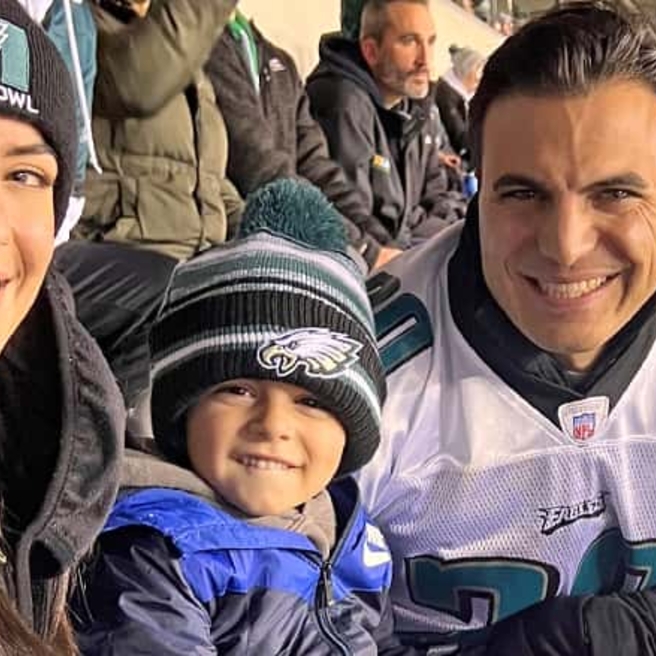What is neuroblastoma?
Neuroblastoma is a tumor of nerve tissue that develops in infants and children and can occur in many areas of the body. It develops from the tissues that form the sympathetic nervous system (which controls body functions such as heart rate and blood pressure, digestion and levels of certain hormones). It most commonly begins in the abdomen in the tissues of the adrenal gland, but it may also occur in other areas. Neuroblastoma can spread to the lymph nodes, liver, bones and bone marrow.
The average age of a child diagnosed with neuroblastoma is about 18 months of age but the condition is occasionally seen in teenagers or even young adults. It is found slightly more often in boys than in girls. In the United States, about 800 new cases of neuroblastoma are diagnosed each year.
Doctors at Children's Hospital of Philadelphia have discovered many of the causes of neuroblastomas. These discoveries will help in the development of new and better neuroblastoma treatments. Genetic testing for children with neuroblastoma is available at CHOP, under the direction of Yael Mossé, MD, and John Maris, MD, where there appears to be a family history of the disease.
Signs and symptoms of neuroblastoma
Symptoms of neuroblastoma will vary depending on the site of the primary tumor or the extent that it has spread (metastasized). The most common primary site is the abdomen. Other primary sites include the chest, neck, and pelvis. Neuroblastoma can spread to other areas of the body. If your child has a primary tumor in the abdomen, you may notice bellyaches, weight loss or a bigger abdomen. Some children only complain of general aches and pains.
Diagnosing neuroblastoma
Your child will need to have a series of tests to help doctors understand the extent of the disease. Some neuroblastoma tests include:
- 123I-MIBG scan. A small amount of radioactive iodine (123I), linked to the very specific neuroblastoma chemical MIBG, is injected and an area of the body is viewed through pictures taken 24 hours later.
- CT scan (computerized tomography) or MRI scan (magnetic resonance imaging). These scans are done to get pictures of the head, chest, abdomen and/or pelvis to measure the size of the tumor and to look for spread of the disease.
- Bone marrow aspirate and biopsy. Bone marrow is removed from the bone (usually the hip bone) either by aspiration (suctioning a small amount through a hollow needle) or by biopsy (cutting out a small piece of bone marrow). This test is generally done under anesthesia.
- PET (positron emission tomography) scan. Like an MIBG scan, this scan detects neuroblastoma throughout the body after the injection of a small amount of radiation tagged to a sugar-like compound. This is especially useful in the 10 to 15 percent of cases where MIBG is not a useful diagnostic tool.
- Urine VMA/HVA test. This test will determine the amount of a substance called catecholamines that is found in the urine, and is produced and secreted by the tumor.
- Tissue biopsy. This test allows us to collect a small sample of the tumor. It is done in the operating room or in the interventional radiology suite. This test can confirm the diagnosis of relapsed neuroblastoma, and can be used to perform genetic testing for specific mutations that might be targets for new drugs. The rationale for and logistics of a biopsy would be discussed with you in detail.
Treatment for neuroblastoma
Treatment for newly diagnosed neuroblastoma
When deciding on your child's neuroblastoma treatment plan, we start by determining whether the disease risk is low, intermediate or high.
- Low-risk disease. If your child is younger than 1 year old at diagnosis, or has small, easily removed tumors, the child may only need a simple surgical procedure to treat neuroblastoma or careful follow-up.
- Intermediate-risk disease. If your child has a larger tumor that has not spread, or is a baby with disease that has spread (but does not have the MYCN abnormality), we will probably treat the child's neuroblastoma with surgery and four to eight months of chemotherapy. Often, patients with intermediate-risk disease do not need radiation treatments.
- High-risk disease. About half of neuroblastoma patients have high-risk disease, either because the tumor has spread to other parts of the body or because test results show high-risk features, such as MYCN amplification. If your child has high-risk neuroblastoma, treatment includes five months of chemotherapy, surgery, radiation therapy including proton therapy, high-dose chemotherapy followed by his or her own stem cell rescue, and immunotherapy combined with biological therapy. These very intense treatments have improved the cure rate of this complex disease and Children's Hospital has led the efforts to develop these modern treatment approaches.
Newly diagnosed patients are generally treated according to Children's Oncology Group protocols, many of which were developed by CHOP doctors. However, every child will receive individualized treatment planning and other treatments may be recommended. Stephan Grupp, MD, regularly focuses on children with advanced disease, and oversees all transplant and stem cell collection aspects of high-risk neuroblastoma patient care.

Get a Second Opinion from CHOP
Our experts are here to review your child's diagnosis and treatment plan, and work with primary oncologists as needed
Surgery
For most children with neuroblastoma, treatment includes surgery, sometimes just for a biopsy at first, then eventually for removal of the tumor. Although some neuroblastomas can be safely removed early in the course of therapy — which in very rare cases might be the only treatment necessary — the vast majority of neuroblastomas have a very rich blood supply and tend to wrap around vital structures (such as major blood vessels), making it unsafe to try to remove them early in the course of treatment. Learn more about surgical treatment for neuroblastoma.
Treating relapsed or refractory neuroblastoma
Unfortunately, high-risk neuroblastoma still has a very high rate of non-responsiveness, or recurring/relapsing during or after treatment. Learn more about the innovative ways we treat kids whose disease is relapsed or refractory, through the Refractory Neuroblastoma Program at Children's Hospital of Philadelphia.
Some children treated for cancer develop complications years later. Our Cancer Survivorship Program provides information about the potential long-term effects of the specific neuroblastoma treatment your child received, including ways of monitoring and treating these effects.
Resources to help
Neuroblastoma Resources
Solid Tumor Program Resources
We have gathered resources to give you information and help you find answers to your questions.


